
British Steel Engineering Steels is committed to Total Quality Management. Many customers perceive the quality of the product or service as being of equal (or greater) importance as price. Total Quality Management has added value to British Steel Engineering Steels’ products and services by addressing customer quality requirements and has made British Steel Engineering Steels (BSES) a world leader in the manufacture of engineering steels.
The commitment to quality has been recognised by the achievement of international quality assurance standards such as the International Standards Organisation’s ISO 9000. In 1998 BSES won a National Training Award, through a scheme run on behalf of the government by the Department for Education and Employment. Such awards can provide market and competitive benefits to an organisation.
This case study examines how British Steel Engineering Steels (BSES) used Total Quality Management principles to establish a training framework to increase the knowledge and skills of Health and Safety, thereby further improving business safety performance.
A Total Quality culture
As well as providing a set of guiding principles and policies, Total Quality Management creates a culture. In this culture every employee, at every level, takes responsibility for meeting the needs of the customer. Total Quality Management concerns people, not just policies and procedures. When companies establish a Total Quality Management culture, they are usually working towards becoming a learning organisation. The learning organisation continually works towards improving its capacity to create its own future.
A learning organisation brings people together to achieve shared objectives; it empowers employees to contribute effectively to the process of continuous improvement. The ability to learn faster than competitors is considered to be the only sustainable way to maintain a competitive advantage. Within this context of continuous improvement, training is a pre-requisite.
Health and Safety at work
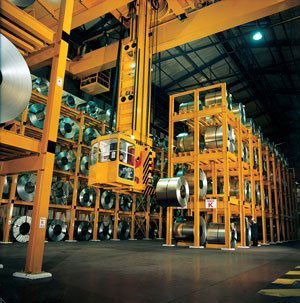
Health and Safety legislation is part of criminal law. Employers are under a statutory duty, under the Health and Safety at Work Act (1974), to keep a written statement of their Health and Safety policy. The Management of Health and Safety at Work Regulations (1992) also requires the formal assessment of risks to employees while at work and implementation of protective/preventative measures. Failure of employers and employees to comply with their individual duties regarding Health and Safety at work can lead to prosecution, fines, imprisonment etc.
By its nature, British Steel Engineering Steels, like any industrial organisation, has the potential to be a hazardous working environment. Large steelworks involve hot metal, noxious gases and heavy machinery. BSES’s Health and Safety record has traditionally been very good. However, the business recognises that safety attitudes and practices require continuous improvement.
This led to a decision to drive Health and Safety standards to leading edge excellence. Improving Health and Safety practices and procedures eliminates lost work time through accidents, increases productivity, reduces costs and improves morale.
In order to achieve these goals there had to be a commitment throughout the organisation to the following principles:
- All accidents are preventable and all risks can be safeguarded.
- Employees at all levels have specific responsibilities for safety.
- Each level of management has overall responsibility for accident and ill health prevention, but is assisted by safety and medical specialists who provide a comprehensive up to date advisory/monitoring service.
- Documented safety policies and procedures are necessary and are communicated effectively to all persons who work within the business.
- Management ensures, via regular audits, that specified systems and procedures are being followed.
- All employees need to be involved in the development of safe working practices.
- All employees are trained to work safely.
- All injuries, accidents and dangerous incidents are investigated and potential hazards recognised.
- Targets and objectives are set in each work area to ensure continuous improvement in safety performance and these are communicated effectively to all employees.
Strategy for Accident Free Employment (SAFE)
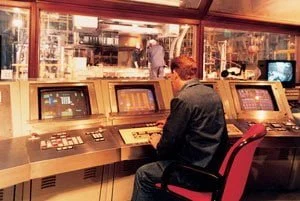
As a learning organisation, BSES regards the achievement of the best possible accident prevention record as one of the highest priorities in running the business, and to achieve this introduced a five year Strategy for Accident Free Employment (SAFE) which had the following overall objectives:
- to put in place systems and procedures
- to ensure positive management of safety
- to create a culture which promotes a positive approach to safety
- over a five year period, to reduce the level of all first time attendances at the medical department by at least ten per cent, year on year, with a target of no lost time injuries at the end of this period.
BSES identified a progressive action plan for implementing the SAFE strategy over a five year period. One of the objectives in Year One was to establish a safety training schedule for managers and supervisors and commence training, involving Ashorne Hill, the steel industry’s management college.
The training cycle
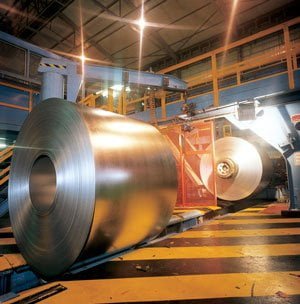
The training cycle shows how to plan an effective training programme which meets the needs of the organisation and the individual. Having established a clear set of strategic training objectives, trainers within organisations need to ask the following questions, which correspond to the training cycle outlined in the five phases:
- To achieve our strategic objectives, what are the implications for the skills, attitudes and knowledge of all the people at various levels of the company? (Setting objectives)
- What is the current position and does that indicate any gaps in existing skills, knowledge and attitudes? (Identification of training need)
- Can I design an effective training response to fill this gap? (Choice of training method)
- How will I know when I have achieved success? (Evaluation)
It is important to remember that the training cycle is on-going. Constant evaluation of each aspect is the key to a successful training programme. The whole training programme took place over five definite phases which related to the objectives of SAFE.
Delivering the training
Phase one
Having set training objectives to meet the business needs, several existing training packages were considered and proposals from external training providers were invited. British Steel Engineering Steels decided to start with a two day Management of Health and Safety training workshop. Senior line managers were involved in its design and it was cascaded from directors to middle managers and supervisors. A number of training methods were employed, including problem solving exercises, lectures and videos. The primary aim of this workshop was to increase line managers’ ability to manage Health and Safety.

This workshop had clearly defined objectives, specifically designed to meet the needs of senior managers. At the end of the course, senior managers were expected to:
- understand the legal framework for safety with particular emphasis on recent European legislation
- interpret the legal requirements in a practical organisational context
- understand the principles of risk assessment and be able to apply these to the working environment
- understand the economic cost of failure, plant damage, lost production etc. and how positive management of Health and Safety can contribute to the positive image of a business
- understand the need to obtain a commitment from individual employees and the safety representatives in a practical and positive way which ensures that Total Safety Management is seen as a process which involves all employees
- identify standards and controls in their own area of responsibility to improve performance.
Clearly identified objectives mean the success of the course can be evaluated. Following the training, senior managers began the process of identifying training needs within their own areas and setting clear objectives against which success could be measured. This exemplifies the concept of cascading.
Phase two
During the first six months of the phase one training, the evaluation process identified the need for further training of supervisors and middle managers. A one day workshop, designed to meet their specific needs, was introduced to complement the initial two day course.
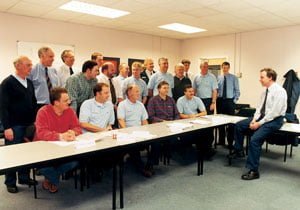
Phase three
A number of senior managers attended a specialist Occupational Health and Safety course. This provided a broad understanding of the management of Occupational Health and Safety, giving an insight into the sorts of problems that may arise and the principles which could be used to solve them.
Phase four
Senior middle managers continued to attend the specialist Occupational Health and Safety course.
Phase five
Trade union representatives attended a special in-house course on training for safety representatives delivered by trade union and management facilitators. In addition a basic safety awareness course was delivered to office staff.
Evaluating the benefits
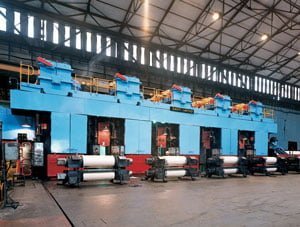
Evaluation determines the value of the training at both an organisational and an individual level. Evaluation is a continuous process and seeks to assess:
- the effectiveness of the training whether the trainees have learned what the training set out to teach them
- whether the learning has been applied
- whether the applied learning has brought about the required changes.
British Steel Engineering Steels identified a number of issues which it addressed during the delivery of the safety training initiative. A course specific to office staff was introduced. Improved timing of workshops ensured maximum attendance and increased cost effectiveness. The two-day workshops for managers were made more specific to the five-year strategic plan. Changes were also made to training methods and workshops were made more interactive using case study exercises and project work.
The primary aim of the training was to develop a positive attitude to Health and Safety. This is needed to create and maintain a safe working environment. SAFE sought to reduce significantly the number of accidents which resulted in lost work time and the number of first visits to the medical centre due to work related injuries.
Benefits
Training benefits the individual as well as the organisation. Individuals now share a healthier and safer working environment. Individual interest in other courses has increased and many employees have learned new skills. The organisation will benefit from better productivity and a reduction in business costs.
At an organisational level the number of first time visits to the medical centre has reduced by 37% and the number of accidents resulting in lost work time has reduced by 42% to date. Training in Health and Safety has involved participants at all levels and created a culture which promotes a positive approach to Health and Safety management. Employees have received relevant training in Health and Safety procedures which clearly defines their responsibilities in this essential area.
Conclusion
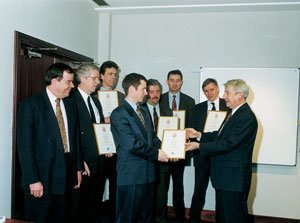
British Steel Engineering Steels has planned and implemented an extremely effective training programme. It has embraced an important training need in such a way as to create a positive change in the organisational culture regarding Health and Safety.
Many employees have been involved in the planning and delivery of the Health and Safety initiative. The nature of the training has broken down barriers between managers and employees by empowering employees and encouraging the continuous shared involvement in Health and Safety management.
In 1998 British Steel Engineering Steels received recognition for its Health and Safety training by winning one of the government’s National Training Awards. Creating a culture in which people are brought together to achieve shared objectives is the key to success.
